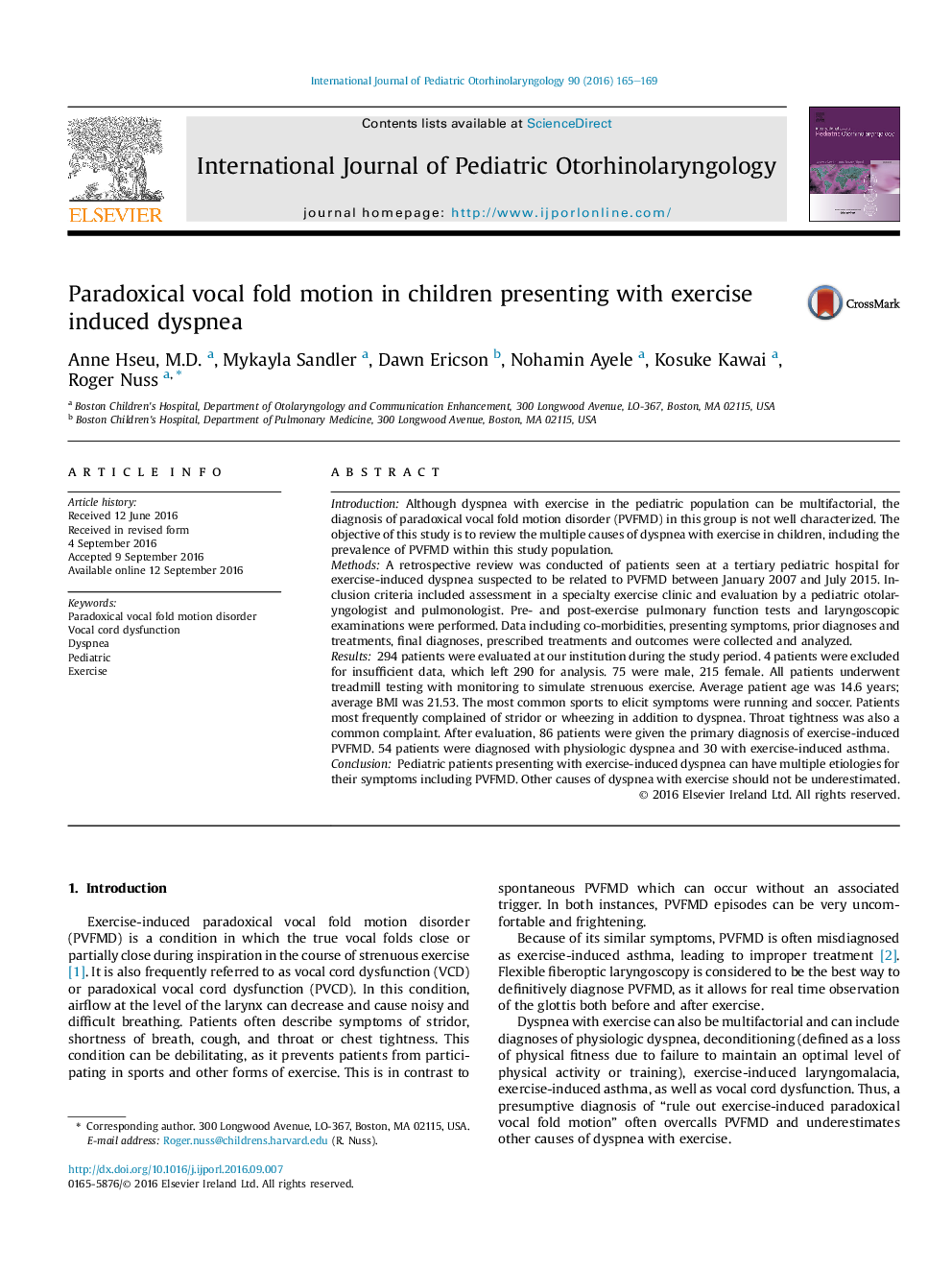| کد مقاله | کد نشریه | سال انتشار | مقاله انگلیسی | نسخه تمام متن |
|---|---|---|---|---|
| 6213018 | 1605978 | 2016 | 5 صفحه PDF | دانلود رایگان |
IntroductionAlthough dyspnea with exercise in the pediatric population can be multifactorial, the diagnosis of paradoxical vocal fold motion disorder (PVFMD) in this group is not well characterized. The objective of this study is to review the multiple causes of dyspnea with exercise in children, including the prevalence of PVFMD within this study population.MethodsA retrospective review was conducted of patients seen at a tertiary pediatric hospital for exercise-induced dyspnea suspected to be related to PVFMD between January 2007 and July 2015. Inclusion criteria included assessment in a specialty exercise clinic and evaluation by a pediatric otolaryngologist and pulmonologist. Pre- and post-exercise pulmonary function tests and laryngoscopic examinations were performed. Data including co-morbidities, presenting symptoms, prior diagnoses and treatments, final diagnoses, prescribed treatments and outcomes were collected and analyzed.Results294 patients were evaluated at our institution during the study period. 4 patients were excluded for insufficient data, which left 290 for analysis. 75 were male, 215 female. All patients underwent treadmill testing with monitoring to simulate strenuous exercise. Average patient age was 14.6 years; average BMI was 21.53. The most common sports to elicit symptoms were running and soccer. Patients most frequently complained of stridor or wheezing in addition to dyspnea. Throat tightness was also a common complaint. After evaluation, 86 patients were given the primary diagnosis of exercise-induced PVFMD. 54 patients were diagnosed with physiologic dyspnea and 30 with exercise-induced asthma.ConclusionPediatric patients presenting with exercise-induced dyspnea can have multiple etiologies for their symptoms including PVFMD. Other causes of dyspnea with exercise should not be underestimated.
Journal: International Journal of Pediatric Otorhinolaryngology - Volume 90, November 2016, Pages 165-169
